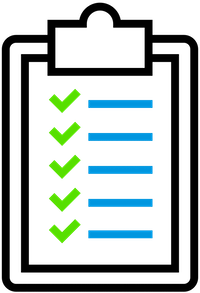Services
CCMIM offers standalone portfolio management and investment advisory services as well as standalone financial planning services. Clients who seek portfolio management and investment advice are assessed fees on an assets under management (AUM) basis. Depending on the complexity of the situation, CCMIM will often include financial planning services for no additional fees.
Portfolio Management

Combining Active and Passive Approaches
Despite trends in investment returns and the marketing that inevitably follows, there is no one right approach to investing. While passive investing has a decided role in portfolios, active management should also play a part. Active investment strategies have experienced periods of out performance when compared to their passive peers and the exact opposite is equally as true. However, tax implication must be carefully weighed when deciding to include active strategies in your portfolios.
CCMIM’s Risk Target AP portfolios combine active and passive investment management in pursuit of delivering more stable returns over time. CCMIM’s Risk Target P portfolios take a decidedly passive approach in aiming to keep portfolio turnover to a minimum.


Low Cost Portfolios
CCMIM does not use third-part asset managers or advisers nor does it use high cost investment company products (Mutual Funds). Our portfolios are constructed primarily with low cost Exchange Traded Funds (ETF), no cost individual equities, and low cost Mutual Funds.


Custody & Trading
Through our Wrap-Fee Program clients pay one fee to CCMIM and pay no further custody fees or transaction based charges regardless of the amount of trading. When trading our active strategies the Wrap-Fee Program keeps costs within acceptable amounts as compared to paying ticket charges separately. The custodian to CCMIM’s Wrap-Fee Program also allows fractional shares to be purchased, which allows clients’ smaller portfolios to hold the same securities as their largest portfolios.


Risk Management
Investing often requires one to choose between risk and return. The fundamental measure of investment risk relates to the variability of investment returns over time. Short term fluctuations must largely be accepted, but long-term draw-downs may be avoided using varying techniques. CCMIM employs risk management techniques in several of its active strategies to help mitigate long term draw-downs.


Periodic Rebalancing
Rebalancing portfolios on a consistent basis can help maintain the intended risk profile. Rebalancing also creates the effect of dollar cost averaging between asset classes. Our active strategies are traded and rebalanced on a weekly basis, which is most appropriate for tax advantaged accounts. However, frequent rebalancing in taxable accounts can result in unintended consequences. The passive strategies we use rebalance much less frequently than our active strategies in order to maintain tax efficiency in taxable accounts. The cost of taxes is often much larger that the benefits gained through active management or periodic rebalancing.


Environmental and Socially Conscious Investing
CCMIM strategies do not incorporate ESG (environmental, social, and corporate governance) filters by default. However, restrictions can be applied to portfolios to exclude securities that don’t reflect a client’s values. Examples of some restrictions are excluding securities that engage in alcohol, military, or the tobacco industries.

Investment Advice

Taxes
- Tax Planning
Tax planning is a broad topic that shows up in most aspects of investing and financial planning. Positioning yourself to utilize available tax advantaged accounts, use tax efficient investment vehicles, tax efficient investment strategies, and use tax location strategies are important steps in maximizing your after-tax returns. Tax planning for the eventual distribution or your assets, whether it be by your withdrawals or by inheritance is an aspect not to be overlooked. - Tax Efficient Investments
One reason CCMIM does not use Mutual Funds in the construction of its portfolios is the potential for tax inefficiencies that the pooled investor structure of Mutual Funds creates. On a comparative basis, ETFs tend to be more tax efficient than their Mutual Fund counterparts for several reasons. One of the tax efficiencies ETFs hold over Mutual Funds is when an ETF shareholder sells their shares. The ETF investor sells their ETF shares to another market participant in the primary or secondary ETF market. The selling activity of one investor does not generate tax consequences for other shareholders of the same ETF. This is also true of the selling activity of individual equity investors. However, when a Mutual Fund investor wants to sell their Mutual Fund shares, they need to redeem the shares directly with the Mutual fund company. The Mutual Fund often needs to sell the underlying securities to meet the investors request. If there are unrealized gains in the underlying securities, all of the shareholders of that Mutual Fund will share in the tax consequence. - Tax Loss Harvesting
Another technique in the pursuit of tax efficiency Tax Loss Harvesting. This strategy involves selling shares that may have a tax loss and replacing them with other similar, but not substantially identical investments. In this regard, the investor would realize a tax loss, but still maintain similar portfolio characteristics. The ultimate goal is to maximize after-tax returns by delivering index-like investment returns while delivering tax losses when available.


Liquidity
Planning for sufficient liquidity ahead of time is an important step in the investment process. However, many situations entail managing existing illiquid investments through strategic sales and/or the use of derivatives to hedge the risk out of positions that are not advantageous to sell. The illiquidity may have arose from the type of investment vehicle purchased, through concentrated positions that may have restrictions, or investment positions that have large unrealized tax gains.


Time Horizon
Understanding an investors time horizon is more than just knowing how many years the investor has until the date of a planned event such as retirement or a major purchase. It is important to understand the probability of success in meeting the investors goals within the given time-frame. Given the fact that investment returns don’t always follow a predictable sequence, statistical techniques such as Monte Carlo analysis can help guide an investor in selecting a portfolio that has a high probability of success within the given time horizon an investor faces.


Risk Assessment
A key component to constructing an investment approach and policy statement is gauging an investor’s risk tolerance. There are two components to a risk assessment.
The first is to determine an investor’s ability to accept risk. This is largely objective in nature and revolves around the investor’s current financial situation, the probabilistic future financial situation, and the goals that the investor needs to achieve.
The second component is to assess an investor’s willingness to accept risk. This is highly subjective as one’s own personality determines this.
Either of the two components can act to limit the overall risk an investors may take on. If an investor has the ability to take risk, but not the willingness to accept the same level of risk, this can lead to emotional decisions with adverse outcomes. Likewise, an investor may have a certain willingness to accept risk, but lacks the ability to take on the risk. In this case, the investor’s ability to accept the risk will be the limiting factor in choosing the correct investment portfolio.


Required Return
Another guide in targeting an appropriate portfolio allocation is to first calculate an investor’s required return. Having an investor’s required return can indicate the level of portfolio risk one needs to accept in order to achieve a desired goal.

Financial Planning
CCMIM offers comprehensive personal financial planning as well as business planning in the following areas. CCMIM works closely with qualified attorneys and accountants to develop a plan when a situation warrants specialized expertise.

Retirement
Retirement planning is multifaceted. Some of the areas that require special attention are tax efficient savings, tax efficient withdrawals, social security planning, medical care, and debt payoff. The bottom line is that having a clear picture of your retirement income needs and income sources is paramount.


Education Savings
There are various ways to fund education. Understanding and maximizing the available tax qualified accounts available for education savings is always the prudent choice as opposed to simply dipping into cash reserves or other investment accounts.


Estate Planning
What, how, and who will receive your assets after your passing is the general theme of estate planning. However, provisioning to protecting assets while you are alive and planing to appoint decision makers in the event you become incapacitated is an important step to take. CCMIM can guide you through the myriad of topics and refer you to a qualified estate planning attorney should your particular situation warrant it. The following areas. At a minimum, the following topics should be addressed with a qualified professional.
- Last Will & Testament
- Living Will
- Health Care Proxy
- Revocable Trusts
- Irrevocable Trusts
- Estate taxes
- Insurance Planning


Real estate
Providing advice on residential and commercial real estate purchases, valuation, and disposition as well as commercial real estate operations.


Business
We provide assistance in choosing and applying for the correct business entity to fit your plans. In addition we provide advice on business valuation, succession planning, and business operations.
